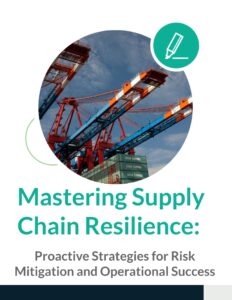Balancing resources and demand are crucial for maintaining efficiency, profitability, and customer satisfaction in any organization. This involves carefully managing inventory levels, workforce allocation, and production schedules to ensure that the supply meets the variable needs of customers. By effectively aligning resources with demand, businesses can minimize waste, reduce costs, and enhance service delivery. Ultimately, this equilibrium not only drives profitability but also fosters long-term customer loyalty and satisfaction, as clients receive the right products and services when they need them. This blog post dives into the intricacies of capacity planning, offering decision-makers practical insights and actionable tips for optimizing their organization’s resource management.
Understanding Capacity Planning and Its Importance
Capacity planning is the essential process of determining the production capacity needed by an organization to meet the variable demands for its products or services. This process involves analyzing current production capabilities, forecasting future demand, and making informed decisions about resource allocation. It’s a strategic approach that helps businesses align their resources—such as personnel, machinery, and materials—with market needs. By doing so, organizations can ensure they can deliver on their promises without overextending or underutilizing their capabilities.
For decision-makers, effective capacity planning involves not only having the right amount of resources—be it manpower, equipment, or raw materials—but also timing their availability accurately. This means anticipating peak demand periods and ensuring that resources are ready to meet those demands without delays. By carefully assessing and adjusting capacity, businesses can avoid common pitfalls like stockouts or excessive inventory, both of which can negatively impact financial performance and customer trust.
Additionally, effective capacity planning leads to increased operational efficiency, as businesses can streamline their processes and reduce waste. By optimizing resource use, organizations can lower operational costs, enhance productivity, and ultimately improve overall customer satisfaction. This strategy enables a cycle of growth fueled by efficient capacity management.
Types of Capacity Planning
Short-term vs. Long-term Capacity Planning
Capacity planning can be categorized into short-term and long-term planning; each serving distinct and crucial purposes within an organization to optimize resource utilization and meet operational demands effectively.
Short-term capacity planning focuses on immediate resource needs, typically covering a period of days, weeks, or months. This type of planning is essential for adjusting to daily fluctuations in demand, which can be influenced by various factors such as seasonal trends, promotional activities, or unexpected market changes. It ensures that resources—such as manpower, machinery, and materials—are allocated efficiently to meet current production schedules and customer demands. By closely monitoring these short-term dynamics, organizations can avoid bottlenecks, reduce idle time, and maintain a smooth operational flow, ultimately enhancing customer satisfaction and operational efficiency.
Long-term capacity planning, on the other hand, examines resource needs over a more extended period, often spanning several years. This strategic approach involves a comprehensive analysis of future trends, potential market changes, and substantial investments required to expand or reduce capacity in alignment with the organization’s overall goals. Long-term planning requires forecasting demand based on historical data, market research, and technological advancements. By anticipating shifts in consumer behavior and industry developments, companies can proactively allocate resources, invest in new technology, and make informed decisions regarding facility expansions or closures. This foresight not only helps in mitigating risks associated with overcapacity or undercapacity but also positions the organization for sustained growth and competitiveness in the marketplace.
Capacity planning is a crucial process that helps organizations align resources with current and future market demands. It consists of short-term and long-term planning. Short-term capacity planning addresses immediate resource needs to manage daily demand fluctuations, ensuring operational efficiency and customer satisfaction. Long-term capacity planning takes a broader view, analyzing future trends and making investments to align resources with growth objectives.
Strategic vs. Tactical Capacity Planning
Capacity planning is a crucial aspect of organizational management, and it can be approached from both strategic and tactical perspectives, each addressing different levels of decision-making and timeframes.
Strategic capacity planning involves high-level decisions that impact the entire organization and its long-term goals. This approach requires a comprehensive understanding of market trends, customer demands, and the competitive landscape. It includes major investments in new facilities, technology upgrades, and long-term workforce planning. For instance, a company might decide to build a new manufacturing plant to meet anticipated growth, or it may invest in advanced automation technologies to increase efficiency. These strategic decisions not only shape the future direction of the company but also ensure that it can adapt to evolving market conditions, ultimately positioning the organization for success in the long run.
On the other hand, tactical capacity planning focuses on more immediate and specific actions that optimize current operations. This approach is essential for ensuring that resources are allocated efficiently and that production processes are streamlined. Tactical planning includes scheduling workforce shifts to meet demand fluctuations, managing inventory levels to prevent shortages or excess stock, and coordinating short-term production activities to align with customer orders. Additionally, it may involve troubleshooting operational issues and implementing process improvements to enhance productivity. By concentrating on these day-to-day operational details, tactical planning ensures that the organization’s daily functions run smoothly and efficiently, supporting the broader strategic objectives.
Capacity planning can be strategic, focusing on major organizational goals, or tactical, concentrating on daily operations to optimize resource use and streamline production. Together, these elements help businesses mitigate risks, boost efficiency, and ensure sustained growth and competitiveness.
Balancing Resources Effectively
Analyzing Demand Forecasts
Accurate demand forecasting is the foundation of effective capacity planning. By predicting future demand based on historical data, market trends, consumer behavior, and other relevant variables, businesses can make informed decisions about resource allocation and inventory management. This process not only helps in optimizing production schedules but also ensures that companies can meet customer expectations without overextending their resources.
Advanced analytics and machine learning models play a crucial role in enhancing the accuracy of demand forecasts. These sophisticated tools analyze vast amounts of data, identifying patterns and correlations that might not be immediately apparent to human analysts. By leveraging predictive analytics, organizations can anticipate shifts in consumer preference, seasonal fluctuations, and potential disruptions in the supply chain. Ultimately, this proactive approach enables businesses to respond swiftly to market changes, minimize costs, and maintain a competitive edge in their respective industries.
Mitigating Supply Chain Risks
Mitigating supply chain risks is essential to ensuring operational continuity and resilience. Effective risk management strategies begin with a thorough assessment of potential vulnerabilities within the supply chain, such as fluctuations in demand, supplier reliability, and geopolitical factors. By diversifying suppliers and establishing robust relationships with multiple vendors, organizations can reduce dependency on any single source and enhance their ability to respond to disruptions.
Additionally, implementing agile inventory management systems allows businesses to maintain optimal stock levels while being responsive to changes in demand. Advanced tools, such as inventory optimization software and just-in-time delivery models, help minimize excess inventory and associated carrying costs. It is also vital to incorporate regular scenario planning into capacity strategies, enabling organizations to develop contingency plans for various risk scenarios, thus facilitating quick responses and recovery action when faced with unexpected supply chain challenges. By proactively addressing these risks, companies can safeguard their operations, ensuring they maintain the agility and efficiency needed to thrive in a competitive landscape.
Assessing Employee Skills
Another critical aspect of capacity planning is thoroughly evaluating the skills and capabilities of the workforce. This process involves not only identifying the current skill sets of employees but also assessing their potential for growth and adaptability. Decision-makers must ensure that they have the right mix of skilled employees to meet production requirements effectively and efficiently. This may involve hiring new talent with specialized skills that are currently lacking within the team. Additionally, providing targeted training and development programs can empower existing employees to enhance their capabilities, ensuring they remain competitive and engaged in their roles. Another strategy could include reallocating existing staff to different roles that better align with their strengths, thereby optimizing the overall productivity of the workforce. By taking these steps, organizations can build a more resilient and capable team ready to tackle future challenges.
Evaluating Equipment Needs
Properly managing equipment and technology is essential for maintaining optimal capacity levels in any business. Regular assessments of the current state of machinery are crucial, as they allow businesses to identify any potential bottlenecks that may hinder productivity. This evaluation process should include a thorough inspection of existing equipment, considering factors such as age, performance, and maintenance history.
Once potential issues are identified, businesses must invest in necessary upgrades or maintenance to ensure that machinery operates at peak performance. This could involve anything from routine servicing to major overhauls, depending on the condition of the equipment. Additionally, staying informed about the latest technological advancements can provide opportunities for businesses to enhance their operations further.
By prioritizing reliable equipment, companies can meet production demands efficiently, avoiding costly delays or downtime that can impact overall performance and customer satisfaction. Investing in equipment management not only supports day-to-day operations but also contributes to long-term success and growth in a competitive market.
Techniques for Effective Capacity Planning
Capacity Requirements Planning (CRP)
Capacity Requirements Planning (CRP) is a strategic method that organizations employ to determine the optimal capacity needed to meet their production goals efficiently. This method involves a comprehensive analysis of the workload across various resources, including machines, labor, and materials. By evaluating these elements, organizations can compare the projected workload to the available capacity, identifying any discrepancies that may exist.
CRP plays a vital role in helping organizations pinpoint gaps between capacity and demand. For instance, if the demand for a product exceeds the current capacity of machines or labor, CRP enables businesses to recognize this shortfall early on. This proactive approach allows organizations to make necessary adjustments, such as reallocating resources, scheduling additional shifts, or investing in new equipment, to ensure that they can meet production targets without overloading systems or underutilizing resources.
In essence, effective Capacity Requirements Planning leads to improved operational efficiency, reduced costs, and enhanced customer satisfaction by ensuring timely delivery of products. It serves as a crucial component in supply chain management and production planning, allowing organizations to remain competitive in an ever-evolving market landscape.
Demand Forecasting
Demand forecasting is an essential technique for effective capacity planning, allowing businesses to anticipate future needs and allocate resources accordingly. By analyzing historical data—such as past sales figures and seasonal trends—alongside thorough market analysis and advanced statistical models, companies can predict future demand patterns with greater accuracy. This predictive capability empowers decision-makers to proactively prepare for fluctuations in demand, whether driven by seasonal changes, economic shifts, or emerging consumer trends.
Utilizing advanced statistical techniques like time series analysis and regression models can significantly enhance prediction accuracy. By integrating these insights into production planning and resource allocation, businesses can ensure they are well equipped to meet future demand, optimizing operations while minimizing excess inventory and boosting overall customer satisfaction.
Armed with this valuable information, companies can adjust their production schedules to align with anticipated demand, guaranteeing the right products are available at the right time. Additionally, effective demand forecasting facilitates improved resource allocation—including labor, materials, and financial investments—ultimately leading to greater operational efficiency and enhanced customer satisfaction. By adopting sophisticated forecasting methods, organizations can adeptly navigate market complexities and make informed decisions that drive growth and profitability.
Integrating Technology
Leveraging technology is crucial for modern capacity planning, as it significantly enhances the efficiency and accuracy of the process. Advanced software solutions, such as cloud-based platforms and AI-powered analytics tools, can automate data collection from various sources, reducing the risk of human error and saving valuable time. These technologies can analyze complex datasets that include historical usage patterns, seasonal demand fluctuations, and operational constraints, providing decision-makers with comprehensive insights into capacity levels.
Furthermore, these tools enable real-time monitoring of resource utilization, allowing organizations to respond swiftly to changes in demand or unexpected disruptions. By visualizing data through intuitive dashboards and reports, stakeholders can easily identify bottlenecks and optimize resource allocation. This proactive approach ensures that resources are not only optimized but also aligned with overarching business goals, ultimately driving productivity and enhancing competitiveness in the market. Embracing technology in capacity planning is not just a trend; it is a necessity for any organization aiming to thrive in today’s fast-paced business environment.
The Importance of Flexibility in Capacity Planning
In an ever-changing market, businesses must be able to adapt not only to fluctuations in demand but also to unexpected supply chain disruptions, economic shifts, and other unforeseen challenges that can arise. It’s important to be ready for factors such as seasonal trends or influencer recognition, as these can lead to surges in consumer demand. Additionally, global events can disrupt the supply chain, affecting the availability of goods.
Implementing flexible strategies is essential for organizations seeking to thrive in this dynamic environment. Cross-training employees can enhance workforce agility, enabling staff to take on multiple roles as needed, thus ensuring that operations continue smoothly even during peak periods or when certain team members are unavailable. Maintaining safety stock—extra inventory kept on hand—provides a buffer against supply chain delays and sudden increases in demand, helping to prevent stockouts and lost sales.
Additionally, investing in scalable technology is crucial. Technology that can easily scale up or down allows businesses to adjust their operations based on real-time data and changing market conditions. This adaptability not only helps in managing current demands but also positions the organization for future growth. By fostering a culture of flexibility and resilience, businesses can respond swiftly to changing conditions, ultimately leading to sustainable success in a competitive marketplace.
Conclusion
Capacity planning is a crucial process for decision-makers striving to effectively balance resources and demand. By grasping the various types of capacity planning, analyzing demand forecasts, evaluating employee skills, and utilizing advanced techniques such as Capacity Requirements Planning (CRP) and demand forecasting, you can significantly enhance your operational efficiency.
Ultimately, flexibility is the cornerstone of successful capacity planning. Organizations that can adapt to changing conditions will be better positioned to meet customer needs, reduce costs, and achieve long-term success. For those looking to enhance their capacity planning efforts, consider exploring advanced software solutions and consulting with experts to ensure your organization is well-equipped to thrive in any market environment. For a more tailored approach, connect with one of our capacity planning experts today.







